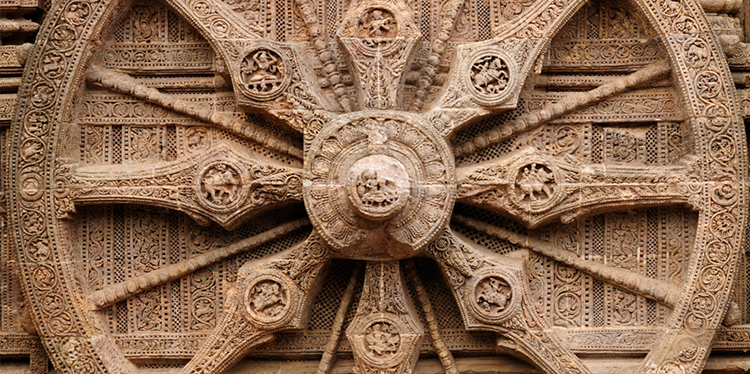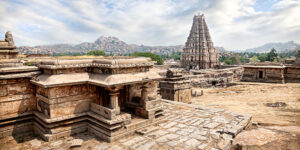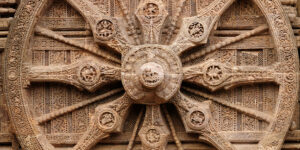Among the religious and spiritual traditions of the world, the traditions born in the Indian sub-continent, belong to a family. They were all born from the great mother tradition called “Sanatana Dharma” that can be translated as “Eternal Dharma”. In fact the word “Religion” itself is a category of thought that is of Western origin and does not capture the nature of the Indic traditions adequately. Modern understanding of India’s spiritual and religious traditions stems from applying the Western category of thought called Religion on India i.e. it involves viewing Indic traditions through a Western lens. When viewed through such a western lens, it may appear that India has four major religions i.e. Hinduism, Buddhism, Jainism and Sikhism, all of which were born and evolved in the Indian soil and mind. Indeed this has become the established understanding about India, and is actually subscribed to by many Indians themselves. There is however, an alternate way of grouping together and understanding the Indic traditions, freed up from the limitations of a Western interpretational lens i.e. through the phrase “The Dharma Traditions of India”.
The central distinction is as follows: When we speak of the Religions of India, i.e. Hinduism, Buddhism, Jainism and Sikhism, we are privileging a western category of thought called “Religion” whereas, when we speak of the Dharma Traditions of India, i.e. Hindu Dharma, Buddha Dharma, Jaina Dharma or Sikh Dharma, we are privileging an Indian category of thought called Dharma.
What then is the difference between the Western word Religion and the Indian word Dharma? Indeed a great many problems have been created in both the western understanding about India, as well as Indian self-understanding by equating these two words – Religion and Dharma.
The Western word Religion is born of Western understanding of its Abrahamic family of Religions i.e. Judaism, Christianity and Islam each of which has a historical founder, and a specific canonical book or collection of texts which contains the definitive word of God. In the course of Western or at least middle eastern history, each new Prophet has claimed that the truth that he proclaimed to have received directly from God, repudiates the earlier version of God’s word, or at least God has now updated his own word, through this new prophet. This necessarily sets up a hard boundary between one Abrahamic Religion and another, leading inevitably to opposition and conflict. Even though the Abrahamic Religions may share many common ideas amongst themselves, they also differ from each other quite sharply, and their differences are often far more important. One cannot be both a Christian and a Muslim at the same time – he or she has to convert from one religion to the other and this sets up a competitive space where each religion seeks necessarily to convert others into its own faith.
In contrast, in the Rig Veda, the oldest book of knowledge known to humanity, there is a verse which says “Ekam Sad Vipra Bahudha Vadanti”, which can be rendered in English as follows: There is but One Reality, but the wise (the vibrant ones i.e. the awakened ones) speak of it in a variety of tongues. The ancient Rishis (Seers or Enlightened Ones) of Sanatana Dharma anticipated the inevitable plurality of spiritual traditions and religions that would evolve through time, and granted space for their smooth and peaceful evolution. Therefore within Sanatana Dharma there are many sub-traditions generally called “Sampradayas”. Some examples of Sampradayas are Vedanta, Advaita Vedanta, Shaiva, Vaishnava, Gaudiya Vaishnava, Smartha, Shakta and so on. While many of these Sampradayas differ from each other in terms of philosophy, practices, ritual and forms of worship, they also have a lot in common. For example, most Indic Sampradayas i.e. Traditions are rooted in the concept of Karma and Janma (Punar-Janma means Re-incarnation). This idea suggests that the human being lives many lives, where in the inner being i.e. the soul or spirit of the human being leaves the physical body at death, and takes on a new body and continues its journey, as a newborn. The laws governing the birth, death and rebirth of beings, and their evolution up and down the scale of consciousness is enshrined as the Law of Karma. A corresponding idea shared by all Indic Sampradayas is the possibility of a complete and total release from this seemingly never ending cycle of birth and re-birth, variously called as Moksha, Nirvana or Kaivalya. And threading through them all, is the idea of Dharma.
The Sampradayas of India, i.e. the various Indic traditions are sustained by a long standing lineage of Gurus or Teachers, beginning generally from a single historical Founder. He or she may be a great Rishi or Mahatma who created a particular school of thought, philosophy and practice. In this sense, the Indian concept of a “Sampradaya” i.e. a religious or spiritual tradition is more equivalent to the Western word “Religion”. On the whole, the various Rishis seek to emphasize their fidelity to the Vedas, Upanishads and the Bhagavad Gita and establish themselves as the carriers of the great tradition of Sanatana Dharma. Even Bhagavan Sri Krishna, in the Bhagavad Gita, states that “He Is not really saying anything new – What he is teaching his famous disciple Arjuna has been said before many times” (BG – IV.1-2).
Even where they do not fully subscribe to the Vedas, as in the case of the Buddha, they still affirm the eternality of the Dharma, for example the Buddhist Dhammapada says “Esa Dhammo Sanatano”. In other words, Dharma is a transcendental category of thought, it transcends individual Gurus and their Sampradayas or lineages; it transcends even the Sampradayas that affirm the Vedas and becomes a category generally common to all the Indian religious and spiritual traditions. Even though there may be differences in each Sampradaya’s enunciation of Dharma, that they are all expounding the one and the same Universal Dharma is a claim common to all. Thus the Dharma Traditions of India is a more Indic way of understanding India’s traditions as belonging to a single family that is more authentic to the Indic self-understanding, without the intervention of the western category called Religion.



